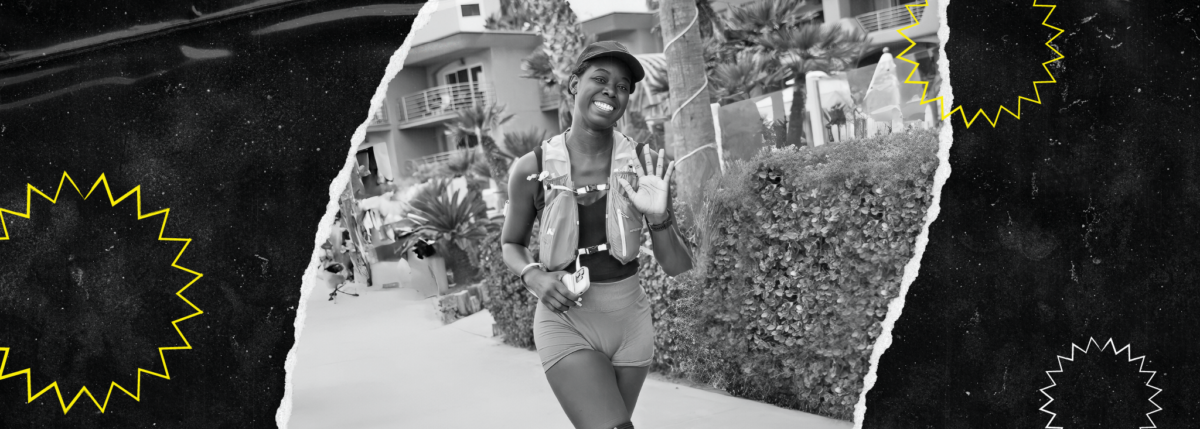Lessons Learned from My First CGM Experience
Written by: T'ara Smith, MS, Nutrition Education
4 minute read
September 24, 2021
U.K.-based Type 2 advocate, Ken Tait, shares his experience with the Freestyle Libre 2 and why people with T2D should use a CGM.
Ken Tait is a passionate advocate for people with type 2 diabetes, and one of the first vocal members in our community at Beyond Type 2. Having lived with type 2 diabetes for over 22 years, Ken is active in the diabetes online community while also juggling his work as a psychotherapist living in Bromley-Kent and London. Originally from Edinburgh, Scotland, Ken talks about living with type 2 diabetes and how the Freestyle Libre has changed his diabetes management.
BT2: What was diabetes management like for you before you started using a continuous glucose monitor (CGM), and how were you able to get a CGM?
I started insulin in 1999, and I had to finger-prick to measure my blood glucose levels. I did that until this year. The thing is with finger pricking, you don’t know whether you’re going up or down. It’s a moment in time; that kind of annoyed me.
But after starting diabetes advocacy in 2019, I heard all about these great things called continuous glucose monitors (CGMs). I thought if I’m going to be an advocate, I need to understand them. We don’t get them free in the U.K. if you’re a type 2 because we are not deemed good enough for them. Unfortunately, even some type 1’s don’t get it as well. So I had to self-fund it myself and pay for it myself because if you don’t experience it, then how can you explain what it is to others? I thought I was only going to use it for a month, but I got hooked.
How did it change your perception of your blood sugars and overall management?
It opened my eyes to what was actually happening inside my body with my diabetes and how my insulin reacted to differently to things. Before I had a CGM, when you went to bed at night, I pricked your finger to find out what it was. Depending on the range, I’d have a snack just in case I went low. But later I learned I’d be overeating when I don’t need to eat at all.
What Libre 2 also did was allow me to sleep. It sounds an alarm up if you go low, and that to me is one of the definite plus signs.
There’s also so much judgment, stigma, and shaming of type 2 diabetes in the U.S. Do you experience that in the U.K., too?
Some people do get that stigma of, “Oh, you’re overweight. What’d you expect?” or “You’re the wrong shape. You’re the wrong person, wrong color, or whatever it doesn’t matter.” I really get annoyed with that.
They’re not looking at the person themselves. They’re looking at what they recognize, especially healthcare professionals, as a textbook person. Your diabetes is not the same as my diabetes, and your diabetes is not the same as everybody else’s.
We are all different and we all have different needs and lifestyles for a start. So we’re going to go through it in a different way. The stigma that I hate is the one that is between the two types of diabetes. Heather Walker, Ph.D., a researcher and diabetes advocate based in Utah, came up with a great name for it called “othering.”
What is “othering” between different types of diabetes?
It’s when someone assumes you shouldn’t something because you have diabetes, but the person, a type 1, may respond that’s for the “other” type of diabetes—in this case, type 2 diabetes. The person asking the question still thinks diabetes is all about the sugar.
Note: (Othering starts with shaming and faulting someone for developing type 2 diabetes as if they “just ate too much sugar.” Type 2 diabetes is caused by a myriad of factors, not just one single one.)
How has using a CGM benefited your diabetes?
It has allowed me to see what was actually happening because when you’re just finger-pricking you’re told to finger-prick two hours after you eat. I found that if I did my insulin before I ate, which they recommend, my blood sugar levels would go up obviously and go quite high, and they would stay there for a long time, more than two hours.
If I finger prick two hours later, I would be injecting, and then I would go down too low. Using a CGM allowed me to see that actually happening.
There’s another feature called time-in-range (TIR), with the goal being within my blood glucose ranges 75 percent of the time during the day. I haven’t done it; I get around 60 percent and think I’m doing quite well. Some days, it’s gone down to 20 percent, but that’s diabetes. Some days you’re not going to be on the top of your game, even if you eat and do the same thing every day.
Looking back at your blood sugar management since you first started using a CGM compared to today, what have you noticed?
I’ve noticed that the graph of my blood glucose levels looked like the Rockies for a long time until I began to understand it more. When you first start wearing a CGM, you suddenly realize, you’re looking at something that is alien in a sense. Have I gotten my graphs down to a reasonable level? Sort of. There are days when I’m going to go haywire, but I’m improving.
How has using the Freestyle Libre 2 helped you with low blood sugars?
If my blood sugar is below 3.9 mmol/L (70 mg/dL), I start feeling like crap. My indication is I need to go to the loo, and then I start getting shaky and experiencing other symptoms. I’ve actually gone down to what I call 2.5 mmol/L (45 mg/dL) suddenly, without feeling anything. I take glucose tablets or eat a piece of chocolate when I feel low. I have my alarms set for high and low blood sugars.
What are your thoughts on CGM access for people with type 2 diabetes?
A CGM, to me, is a tool that should be available to everybody. Whether you use it or not is up to you. If you’re happy and controlled with the finger pricking, then continue on with it. My advice would be to try the CGM at least for a month and see how it goes. It doesn’t really hurt and the device is actually quite painless.
Even just wearing a CGM for a month can be helpful and give you so much useful information that you can apply to your diabetes management moving forward.
Exactly. I have a saying, which I’ve used since 2015 when I started my peer support group, “You manage your diabetes, not your diabetes managing you.”
Now, the one piece of advice I got from my endocrinologist in Edinburgh: “Life is for living.” A CGM gives you that freedom to just get on with your life.
Read Ken’s BeyondPowerful story here.
Read Ken’s Saying Goodbye to GERTI story here.
This content was sponsored by Abbott, the makers of FreeStyle Libre 2,—a Founding Partner of Beyond Type 2.

Author
T'ara Smith, MS, Nutrition Education
T’ara was diagnosed with type 2 diabetes in July 2017 at the age of 25. Since her diagnosis, she focused her academic studies and career on diabetes awareness and living a full life with it. She’s excited to have joined the Beyond Type 1 team to continue her work. Two years later, T'ara discovered she'd been misdiagnosed with type 2 and actually has latent autoimmune diabetes in adults (LADA). Outside the office, T’ara enjoys going to the movies, visiting parks with her dog, listening to BTS and cooking awesome healthy meals. T’ara holds an MS in nutrition education from American University.
Related Resources

Jordan Sooter’s journey to running marathons began in college as a way to stay fit....
Read more

Antoine Gibson is no stranger to overcoming challenges. As a saxophonist and marathon runner living...
Read more

Danica Collins not only prepared for one of the most challenging physical events of her...
Read more

